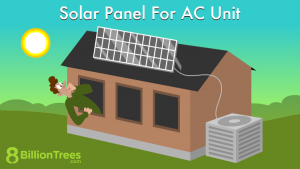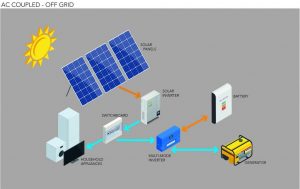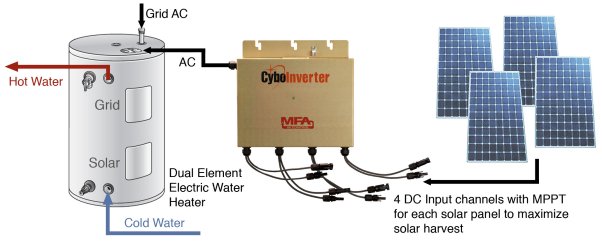Running Your AC Off the Grid: A Comprehensive Guide
In today’s world, where energy efficiency and sustainability are gaining increasing importance, many people are looking for ways to reduce their reliance on the traditional power grid. If you’re wondering how to run your air conditioner (AC) off the grid, you’ve come to the right place. In this comprehensive guide, we’ll explore various options and provide you with valuable insights to help you achieve your goal.
1. Understanding Off-Grid AC Systems
Before delving into the methods of running your AC off the grid, it’s important to understand the fundamental components of an off-grid AC system. These systems typically consist of the following:
- Solar Panels: Solar panels convert sunlight into electricity, which can be used to power your AC.
- Battery Bank: A battery bank stores excess electricity generated by the solar panels for later use, such as during nighttime or cloudy days.
- Inverter: An inverter converts the direct current (DC) electricity stored in the battery bank into alternating current (AC) electricity, which is required to run your AC.
- Charge Controller: A charge controller regulates the flow of electricity from the solar panels to the battery bank, preventing overcharging and damage to the batteries.
2. Sizing Your Off-Grid System
Properly sizing your off-grid AC system is crucial to ensure it meets your power requirements. Consider the following factors when determining the size of your system:
- AC Power Consumption: Calculate the power consumption of your AC unit, typically measured in watts, to determine the capacity of the system you’ll need.
- Solar Panel Capacity: Assess the solar panel capacity required to generate sufficient electricity to power your AC. Factors such as your location, sun exposure, and panel efficiency will affect the number of panels needed.
- Battery Bank Capacity: Determine the battery bank capacity based on your energy storage needs. Consider factors like the number of days you want to run your AC without sunlight and any other appliances you plan to power.
3. Installing an Off-Grid AC System

Once you have determined the size of your system, it’s time to install it. Consider the following steps:
- Solar Panel Installation: Mount the solar panels on your roof or in an area with optimal sun exposure. Ensure they are securely fixed and correctly angled for maximum sunlight absorption.
- Battery Bank Setup: Install the battery bank in a cool, well-ventilated area. Connect the batteries in the bank according to the manufacturer’s instructions.
- Inverter Connection: Connect the inverter to the battery bank and AC load panel. Follow the manufacturer’s guidelines for proper wiring and safety precautions.
- Charge Controller Installation: Install the charge controller between the solar panels and battery bank. Ensure it is properly wired and set up to prevent overcharging or damage to the batteries.
- System Testing: Once everything is connected, test the system to ensure it is functioning correctly. Monitor the performance of your off-grid AC system regularly.
4.1 Energy Conservation
Running your AC off the grid requires careful energy management. Here are some tips to conserve energy and optimize your off-grid system:
- Set your thermostat at an energy-efficient temperature. Each degree you raise or lower can significantly impact energy consumption.
- Use ceiling fans or portable fans to improve air circulation and reduce reliance on the AC.
- Ensure your home is well-insulated to minimize heat transfer, reducing the workload on your AC.
- Close curtains or blinds during the hottest parts of the day to block out direct sunlight.
- Consider using a programmable thermostat to schedule AC usage based on your needs.
4.2 Backup Power
While solar power is a reliable source, unexpected events can sometimes disrupt the energy supply. It’s wise to have a backup power plan in place:
- Invest in a backup generator that can provide electricity during extended periods of low sunlight or battery depletion.
- Consider a hybrid AC system that allows seamless switching between solar power and grid power when needed.
- Store extra fuel for your backup generator, ensuring you have an adequate supply for emergencies.
4.3 Maintenance and Monitoring
To keep your off-grid AC system running smoothly, regular maintenance and monitoring are essential:
- Clean your solar panels regularly to remove dirt, dust, and debris that can reduce their efficiency.
- Inspect and maintain the battery bank to ensure proper functionality and longevity.
- Monitor the performance of your off-grid system, including battery charge levels, solar panel output, and AC power consumption.
- Schedule professional inspections of your system to identify any potential issues or areas for improvement.
5. Conclusion
Running your AC off the grid is a sustainable and energy-efficient choice that offers independence from traditional power sources. By understanding the components of an off-grid system, sizing it correctly, and following proper installation procedures, you can enjoy the comfort of air conditioning while reducing your carbon footprint. Remember to prioritize energy conservation, plan for backup power, and maintain your system regularly to maximize its efficiency and longevity. Embracing off-grid AC solutions contributes to a greener future and a more sustainable world.

Thank you for reading our comprehensive guide on running your AC off the grid. Stay cool and environmentally conscious! For air con power usage see here.


